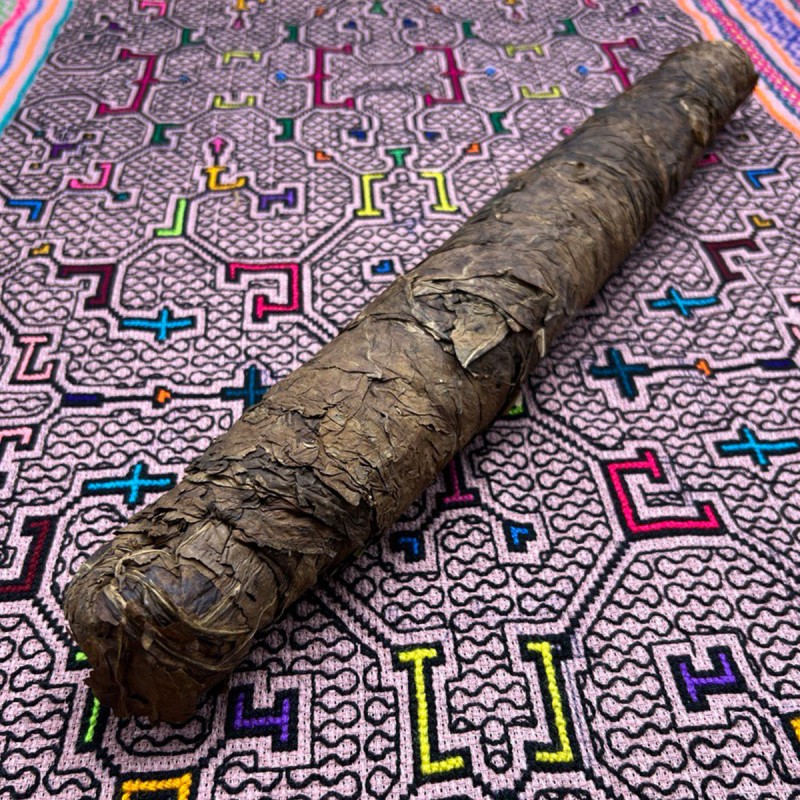

Language:

This Peru Mapacho is a powerful Nicotiana Rustica from the heart of the Amazon region. In the ancient traditional cultures of Peru, this sacred plant is carefully prepared and used during ceremonies. The leaves are selected, fermented, and hand-rolled according to traditional methods. Tabaqueros (tobacco shamans) value this Mapacho for its strong cleansing properties and its ability to bring mental clarity during ceremonial settings.
In the heart of the Peruvian Amazon, this extraordinary Mapacho (Nicotiana Rustica) is prepared according to age-old traditions. Mapacho is considered one of the most powerful forms of ceremonial tobacco and has a rich history in the indigenous cultures of the Amazon region, where it is known as a sacred plant for spiritual connection and clarity.
The preparation of Mapacho is an ancient craft. The leaves for this Peru Mapacho are carefully selected and fermented and rolled according to traditional methods. This results in a firm yet supple roll that originates from the Peruvian jungle. According to indigenous traditions, this specific preparation method optimally preserves the powerful properties of the plant.
Mapacho holds a central position in the spiritual landscape of the Amazon. Indigenous communities use this powerful plant in important ceremonies, from weather divination to fishing ceremonies. There are even specialized tabaqueros (tobacco shamans) who have fully dedicated themselves to working with this sacred plant.
In traditional medicine, Mapacho is valued for its strong cleansing and healing qualities. Shamans use it during ceremonies for energetic cleansing, similar to the use of sage. The smoke is also used for 'sopladas' - a traditional practice where the shaman blows the smoke over someone for energetic purification. In Amazon tradition, this plant is known for bringing mental clarity and focus during ceremonial settings.
Mapacho holds an important place in the rich world of Amazon medicines. Traditional communities in the Amazon region know various applications of Nicotiana Rustica, including its use in rapé - a sacred powder that has been used for spiritual purposes for generations. In the traditional view, this plant is seen as a teacher that aids in gaining insight and deepening spiritual connection.
Each Peru Mapacho roll is handcrafted following an ancient recipe passed down through generations. The leaves are carefully selected, fermented, and tightly bundled into a compact roll. This traditional method creates the characteristic firmness and suppleness that this mapacho is known for.
The roll comes vacuum-sealed for optimal freshness. After opening, it's best to store the mapacho in paper at or below room temperature. Avoid plastic packaging due to the risk of mold formation. If the outer layer becomes dry, you can lightly moisten it with distilled water. After moistening, wrap the roll in a plastic bag for a maximum of two days, then return it to paper storage.
Important: This is a very powerful sacred plant, intended solely for ceremonial use under the guidance of an experienced ceremony leader. Not suitable for consumption or recreational use.